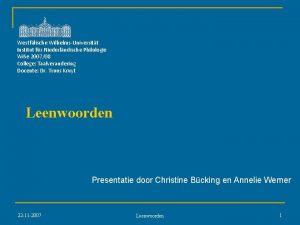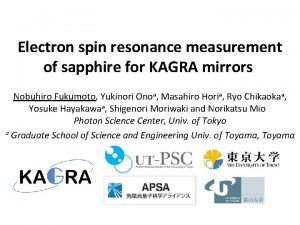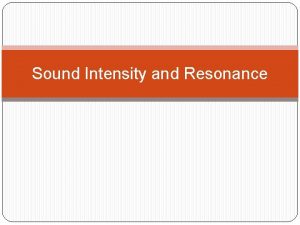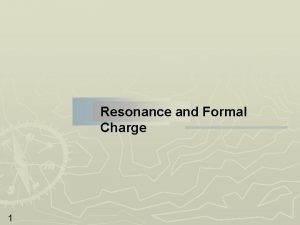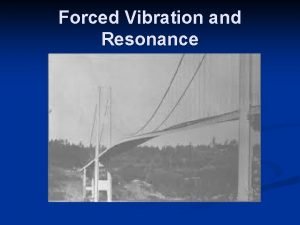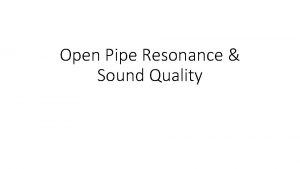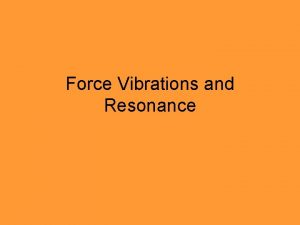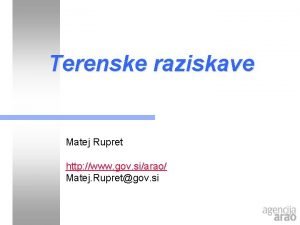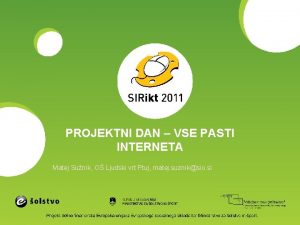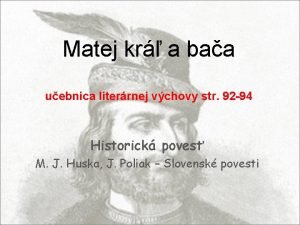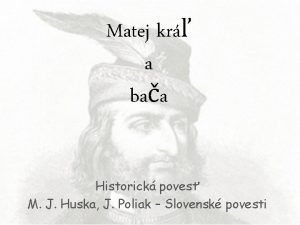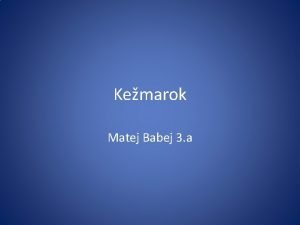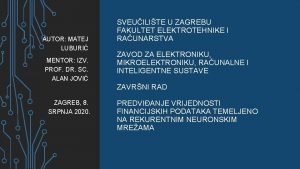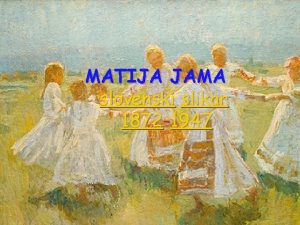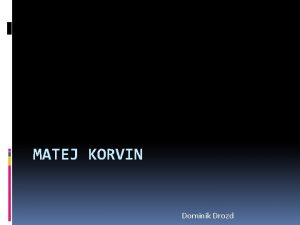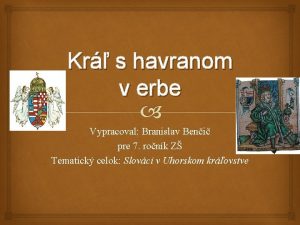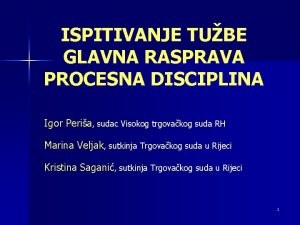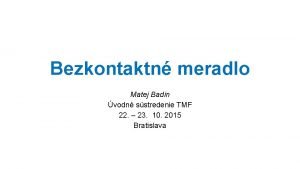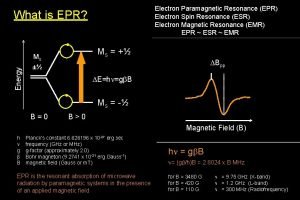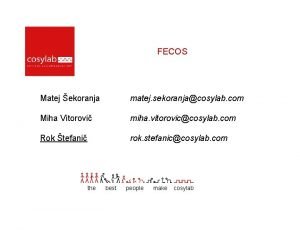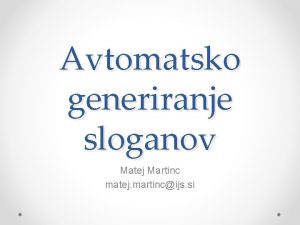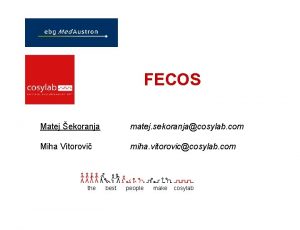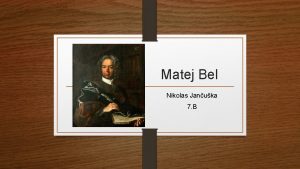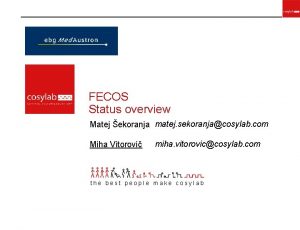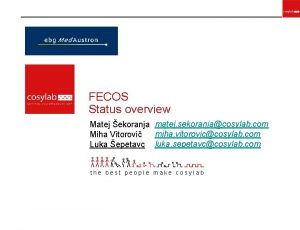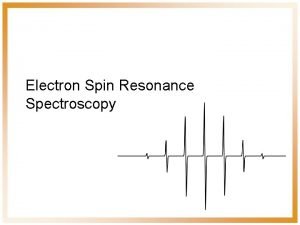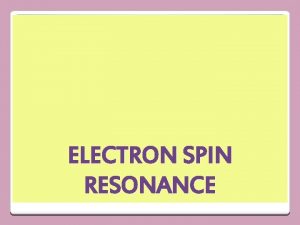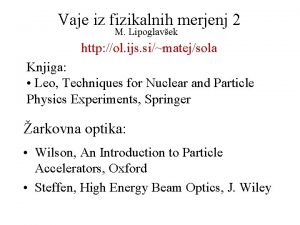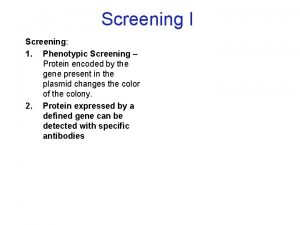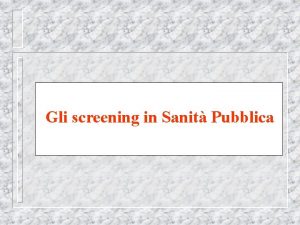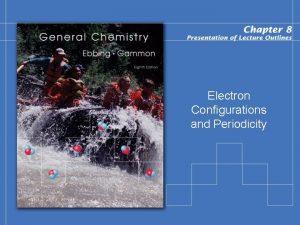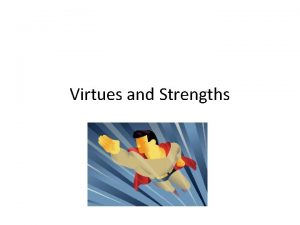Electron screening and resonance strengths Matej Lipoglavek Joef












![Thick targets Target Ue [ke. V] Stoichiometry Graphite 10. 1 ± 0. 5 0. Thick targets Target Ue [ke. V] Stoichiometry Graphite 10. 1 ± 0. 5 0.](https://slidetodoc.com/presentation_image/1d8bb65b2a332e95e83737448edcb038/image-13.jpg)






![Tungsten Target Reaction Ue [ke. V] 7 Li+p 19 F+p Ratio Carbon 1. 8 Tungsten Target Reaction Ue [ke. V] 7 Li+p 19 F+p Ratio Carbon 1. 8](https://slidetodoc.com/presentation_image/1d8bb65b2a332e95e83737448edcb038/image-20.jpg)


- Slides: 22

Electron screening and resonance strengths Matej Lipoglavšek Jožef Stefan Institute, Ljubljana, Slovenia Russbach, March 2015

Nuclear Reactions at Low Energies Due to Coulomb repulsion the cross section σ for charged particle induced nuclear reactions drops rapidly with decreasing beam energy. where η=Z 1 Z 2 e 2/4πε 0ħ(2 E/μ)1/2 is the Sommerfeld parameter. Exponential (Gamow) factor approximates barrier penetration probability. 7 Li(p, α)4 He Cross Section C. Rolfs and R. W. Kavanagh, Nucl. Phys. A 455 (1986) 179.

Electron Screening where Ue is the screeening potential. electron cloud Ec Ue=Z 1 Z 2 e 2/4 pe 0 Ra Potential V(r) Cross section increases at low energies when the interacting nuclei are not bare. Enhancement factor E + Ue = Eeff 0 Rn nuclear radius Ra Bohr radius r H. J. Assenbaum, K. Langanke and C. Rolfs, Z. Phys. A 327 (1987) 461. 269 citations (Web of Science, March 2014).

Previous Results 1 for d(d, p)t reaction from F. Raiola et al. , Eur. Phys. J. A 19 (2004) 283.

Previous Results 2 J. Kasagi, Prog. Theo. Phys. Suppl. 154 (2004) 365. for the d(d, p)t reaction Ue=310± 30 e. V @ 7% H/Pd => concentration dependence

Previous Results 3 for d(d, p)t reaction from K. Czerski et al. , J. Phys. G 35 (2008) 014012. for zirconium metal Ue=319± 3 e. V

Previous Results 4 J. Cruz et al. , Phys. Lett. B 624 (2005) 181; J. Phys. G 35 (2008) 014004. Pd. Li 1%: Ue= 3. 7 ± 0. 3 ke. V Li metal: Ue= 1. 18 ± 0. 06 ke. V -77 e. V Li 2 WO 4: Ue= 237+133 S(E)=0. 055+0. 21 E-0. 31 E 2[Me. V b]

Previous Results 5 L. Lamia et al. , Astron. Astrophys. 541, A 158 (2012). Trojan horse method → bare S factor S(E)=0. 053+0. 213 E-0. 336 E 2[Me. V b] 7 Li(p, α)4 He reaction Ue= 425 ± 60 e. V in Li metal Adiabatic limit: Ue= 82 e. V

Measurements @ JSI X-ray detector beam current target beam Pb absorber neutron detector Ge detector

Measurements @ JSI 2 MV Tandem van de Graaf accelerator

Electron screening in implanted metals Inverse kinematics: 1 H(7 Li, α)4 He Results: Target Ue [ke. V] Stoichiometry Ni 4. 1 ± 1. 0 0. 041± 0. 003 Zn 2. 4 ± 1. 0 0. 68± 0. 05 Pd 2. 3 ± 0. 5 0. 296± 0. 007 Pt 2. 8 ± 1. 3 0. 24± 0. 02

Comparison to previous results Target Stoichiometry 7 Li+p d+d Ni 0. 04 0. 13 Zn 0. 68 0. 13 Pd 0. 296 0. 03 Pt 0. 24 0. 06 Reaction Ue [ke. V] Target 7 Li+p p+7 Li d+d F. Raiola et al. , Eur. Phys. J. A 19 (2004) 283. Ni 4. 1 ± 1. 0 0. 38 ± 0. 04 p+7 Li J. Cruz et al. , Phys. Lett. B 624 (2005) 181. Zn 2. 4 ± 1. 0 0. 48 ± 0. 05 7 Li+p Pd 2. 3 ± 0. 5 3. 7 ± 0. 3 0. 80 ± 0. 09 Pt 2. 8 ± 1. 3 0. 67 ± 0. 05 J. Vesic et al. , Eur. Phys. J. A 50 (2014) 153.
![Thick targets Target Ue ke V Stoichiometry Graphite 10 1 0 5 0 Thick targets Target Ue [ke. V] Stoichiometry Graphite 10. 1 ± 0. 5 0.](https://slidetodoc.com/presentation_image/1d8bb65b2a332e95e83737448edcb038/image-13.jpg)
Thick targets Target Ue [ke. V] Stoichiometry Graphite 10. 1 ± 0. 5 0. 059± 0. 003 Pd 3. 6 ± 0. 7 0. 21± 0. 01 W 5. 8 ± 0. 9 0. 030± 0. 002 Adiabatic limit: Ue= 82 e. V

Thin targets and resonances Breit Wigner resonance cross section Infinitely thick target yield of narrow resonance Integral over the resonance C. Iliadis, Nuclear Physics of Stars, Wiley-VCH, Weinheim, (2007) p. 341.

The 19 F(p, αγ)16 O reaction K. Spyrou et al. , Z. Phys. A 357 (1997) 283; Eur. Phys. J. A 7 (2000) 79.

Thin targets

No enhancement

Inverse kinematics 1 H(19 F, αγ)16 O

Carbon
![Tungsten Target Reaction Ue ke V 7 Lip 19 Fp Ratio Carbon 1 8 Tungsten Target Reaction Ue [ke. V] 7 Li+p 19 F+p Ratio Carbon 1. 8](https://slidetodoc.com/presentation_image/1d8bb65b2a332e95e83737448edcb038/image-20.jpg)
Tungsten Target Reaction Ue [ke. V] 7 Li+p 19 F+p Ratio Carbon 1. 8 ± 2. 0 Graphite 10. 1 ± 0. 5 58 ± 4 5. 7 ± 0. 5 Pd 3. 6 ± 0. 7 18. 0 ± 2. 4 5. 0 ± 1. 2 W 5. 8 ± 0. 9 59 ± 4 10. 2 ± 1. 6 Average ratio: 5. 95 ± 0. 44 for Z 2/Z 1=3 Consistent with Z 5/3 dependence Adiabatic limit for 19 F+p: Ue= 245 e. V Resonance energy shift: ≈1. 5 ke. V in c. m. s Screened resonances are narrower

Conclusions • We have a problem! We do not understand electron screening in the laboratory, let alone plasma. • The largest electron screening was so far measured in tungsten (metal) and graphite (not a metal). • The size of electron screening potential is more than two orders of magnitude above theoretical predictions. • The size of the effect is not proportional to Z. • Different screening potentials are due to different proportions of target nuclei on active and inactive sites. • For stellar plasma we really need to understand what happens in the laboratory experiments. Thanks to: Jelena Vesić, Toni Petrovič, Urša Mikac, Andrej Likar, Žiga Šmit, Matjaž Vencelj, Primož Pelicon, Primož Vavpetič, Drago Brodnik, Aleksandra Cvetinović,

Nuclear Structure and Dynamics III Portorož-Portorose, Slovenia, June 14 th – 19 th, 2015
 Joef betekenis
Joef betekenis Resonance delocalization
Resonance delocalization Electron spin resonance takes in
Electron spin resonance takes in Sound intensity and resonance
Sound intensity and resonance Nitric acid formal charge
Nitric acid formal charge Forced vibration and resonance
Forced vibration and resonance Closed-pipe resonator
Closed-pipe resonator Forced vibration and resonance
Forced vibration and resonance Subdimensions of brand building blocks
Subdimensions of brand building blocks Sophistication brand personality examples
Sophistication brand personality examples Vrtine
Vrtine Matej sužnik
Matej sužnik Matej pirnat
Matej pirnat Matej kral a baca osnova
Matej kral a baca osnova Matej kral a baca
Matej kral a baca Matej babej
Matej babej Rex trójbarwny
Rex trójbarwny Matej luburic
Matej luburic Slovenski slikar impresionist matej
Slovenski slikar impresionist matej Dominik drozd
Dominik drozd Matej korvin cierny pluk
Matej korvin cierny pluk Matej peria
Matej peria Matej badin
Matej badin
